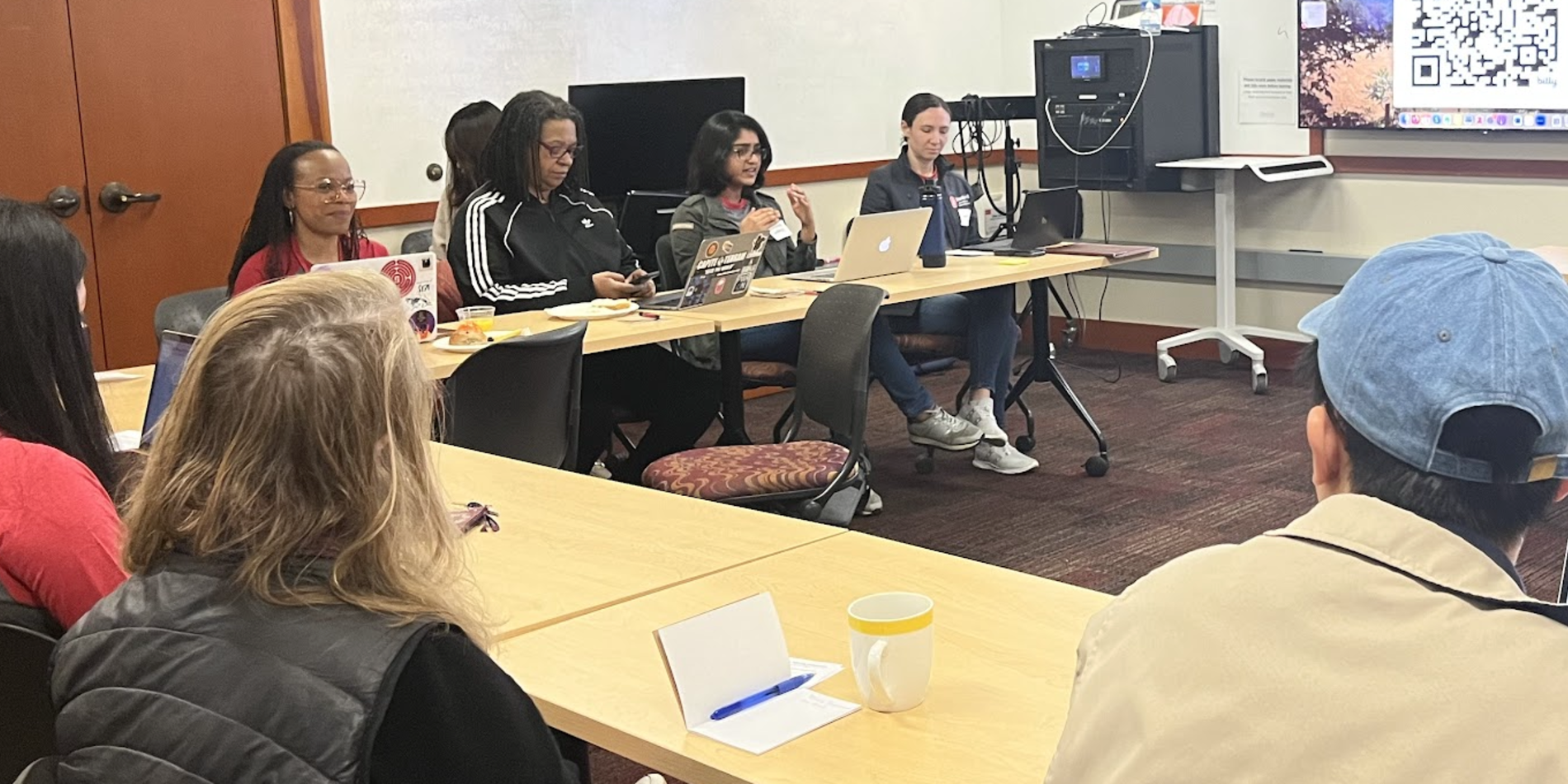"Switching the Lens": A Cultural Rhetorics Reading by Dr. Kevin Browne
Last Thursday, I took my classes of PWR 1 students to see Dr. Kevin Browne’s talk, or more precisely, his reading from his forthcoming book of photo-essays High Mas. Kevin (pronounced Kee-vin) had been my professor at Syracuse when we overlapped there, and when I imagined explaining to him why I had missed his talk to teach, I heard him in my head asking, “Why didn’t you bring your students to see me then?” and I knew the issue was settled.
I was glad I did—and my students were, too. In class I talk about cultural rhetorics, about meaning-making rooted in cultural norms, values, and practices, but here was Dr. Kevin Browne, faculty at the The University of the West Indies, St. Augustine, embodying the Caribbean rhetorical practices of which he is the preeminent scholar. Reading an intensely lyrical essay about the blue devils of Paramin, Trinidad, Kevin shared his efforts to find his identity as a diasporian Trinidadian through photographing and writing about this uniquely Trinidadian Carnival tradition. In our discussion after the reading, my students were struck by the rhetoricity of Kevin’s performance and the tensions around identity, place, and language he explored.
The event began with a introduction from PWR Director Adam Banks, a poetry reading by undergraduate Gia Paige Soles, and a formal introduction by undergraduate Astrid Casimire. Kevin began his reading by playing audio from Paramin’s Carnival, lifting the rhythm of the drums into his own speech—pak patak tak takataktaktak, pak patak tak takataktaktak. This rhythm weaved in and out of fragmented narratives, sometimes as the patter of fleeing feet, sometimes as the whispers of cultural fissures. Kevin’s delivery moved between the second person and the first, a narrator looking at himself as much as for himself. “You are an outsider,” he read, intoning to himself, the photographer, gazing at his countrymen like a tourist. “Your superstitions are undone by theories...You know that to theorize efectively you must forget where you came from.”
His voice rising and falling, sometimes breaking, Kevin theorized from the location of the personal—a choice made by so many women, people of color, and others marginalized in an academy that has absolved them of their right to their own knowledge. In telling his own story—as a rhetorician, a photographer, a Trinidadian—Kevin narrated the “tragic romance of Caribbean being,” challenging himself as well as his audience to locate an identity shaped by its dispersion over water.
During the Q&A, Kevin answered questions about his writing process, the tension between producing language to be spoken or to be read, and fostering ethical relationships between himself and the blue devils he photographed. He spoke of theory and language as equipment, of moving between academic and poetic speech as akin to “switching the lens” on a camera in order to bring something different into view. As a cultural rhetorician, he concluded, he was practicing “rhetoric as an aspiration to the vernacular, rather than a study of it,” relocating himself inside the Caribbean rhetorics he once sought merely to theorize.
Dr. Kevin Browne’s talk is part of this year’s focus on Cultural Rhetorics in the Program in Writing and Rhetoric. In particular, the Lecture Series on Cultural Rhetorics brings prominent cultural rhetoricians to campus to help expand our conceptualizations of what rhetoric is (and what it can be) by exploring the rhetorical traditions and practices of people of color in the US and abroad.



